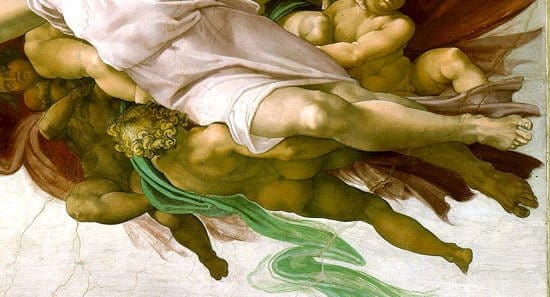The iconic Citadel Thrud, long admired by me and one of those miniatures that I was always keen to get and paint, even though he was much more expensive than I would have liked. When I had the lump of lead in my hand, I contemplated my approach to painting him; I felt he deserved a slightly different approach to my usual style and process, partly because it is Thrud and also because there are such large areas of skin to paint. I searched for some other examples of painted Thruds and found some to be way too smooth, almost disguising and flattening the sculpt, or some that were too sinewy and textured, mkaing the anatomy look a little too awkward. So I aimed for something in between.
It also struck me as an opportunity to experiment; I remember from my Art History degree a technique used by Renaissance and pre-Raphaelite painters where they would under-paint the skin tones with a green hue, known as "verdaccio", which would help create the illusion of veins beneath the skin and to cool down some of the warmer skin tones.
Here's the finished model which I'm very happy with:
My image research led me to an example of verdaccio as seen on Michelangelo's Sistine Chapel ceiling painting:

And here is the processes in getting there using this green under-painting:
 |
| Over a white primer I washed in a diluted Athonian Camoshade (a little washing up liquid added to help it flow). A second darker wash was added to the recesses/shadows. |
 |
| Once dry a subsequent wash of Darkoath flesh was applied |
 |
| I then started building up my layers of highlights using very dilute applications of Elf flesh with increasing amounts of white. This helped blend some of the warm reds into cold greens. |
 |
| This creates quite a washed out effect (although the lighting here hasn't helped) |
 |
| So I glazed with both warm flesh tones over the highlights and cold green for the shadows |
 |
| Final highlights were then applied very sparingly. |
I think the experiment was quite successful although I probably hid too much of the green under-painting with my layers. It's definitely a technique I would like to explore further and I have a Marauder Giant that has been primed years ago that may be the ideal candidate. For now I am currently painting a second Bob Naismith miniature as a companion for this Thrud and I've already made a little scenic base for them both. More on this next time.





Great rendition of Thrud, have the same model just haven't got round to painting it yet, great use of the green undertone, did it in a colour theory course with Banshee, huge eye opener
ReplyDeleteCheers Dave. It's definitely fun to try new techniques and push the boundaries of your hobby. I think there's a lot of scope for different underpainting techniques in particular.
DeleteA really nice miniature painted well.
ReplyDeleteCheers Phil, it's certainly a favourite of mine.
Deletethat is fantastic!
ReplyDeleteCheers Leadmess!
DeleteIncredible. You took this to another level with the use of this technique :O
ReplyDeleteCheers Suber. I wasn't sure if it would make a difference when I started adding highlights, but actually it helped me retain a more subtle contrast between the lights and darks.
DeleteThat's a really cool idea and definitely one I'd like to try now !
ReplyDeleteDo it, I'd love top see your take on it.
DeleteMission accomplished, you now own a Thrudd. He looks great, lovely gems on his belt.
ReplyDeleteRemember do not send him to rescue damsels in distress, it never ends well.
Ha, no happy endings for Thrud. Although for me, it is.
Delete